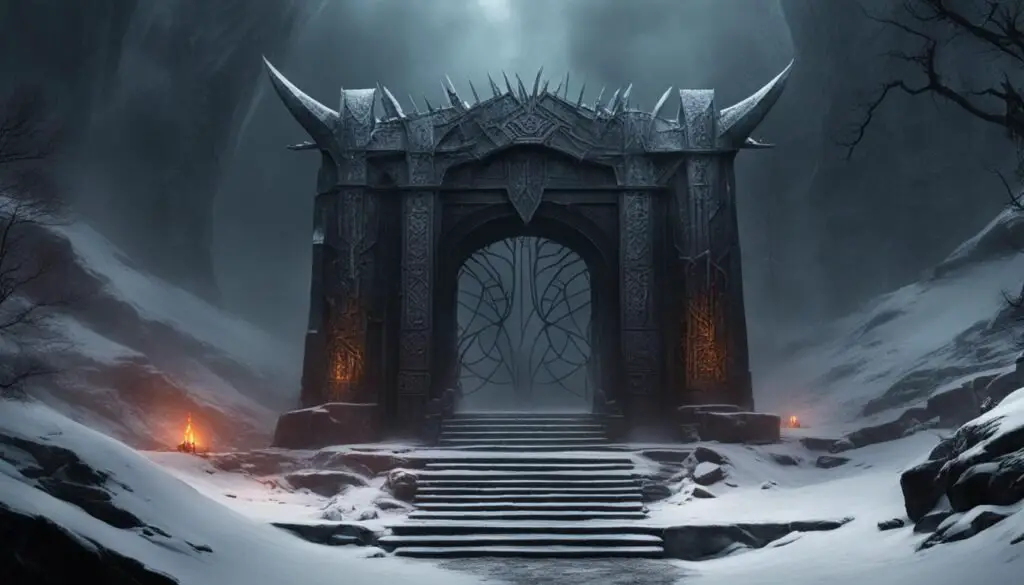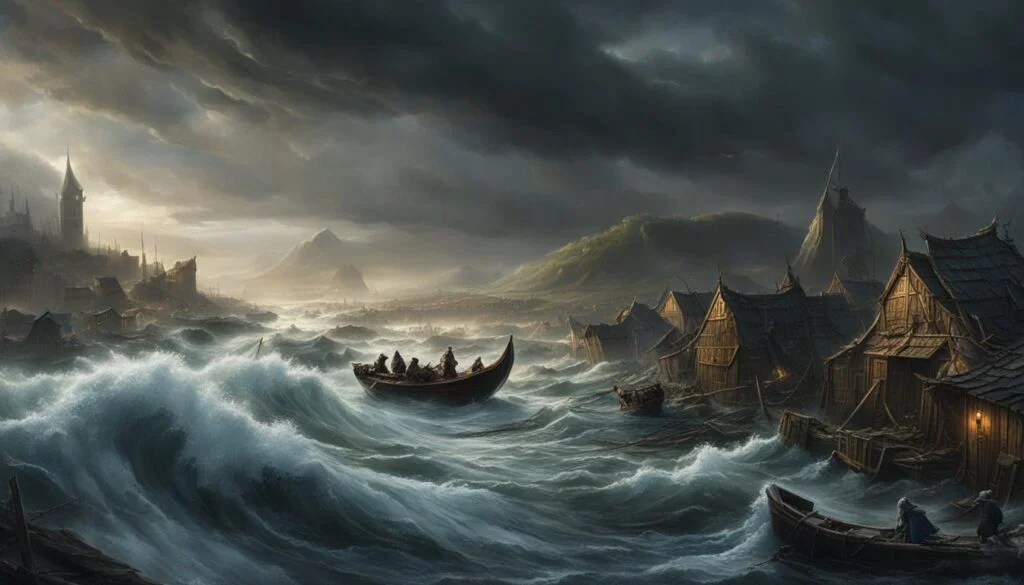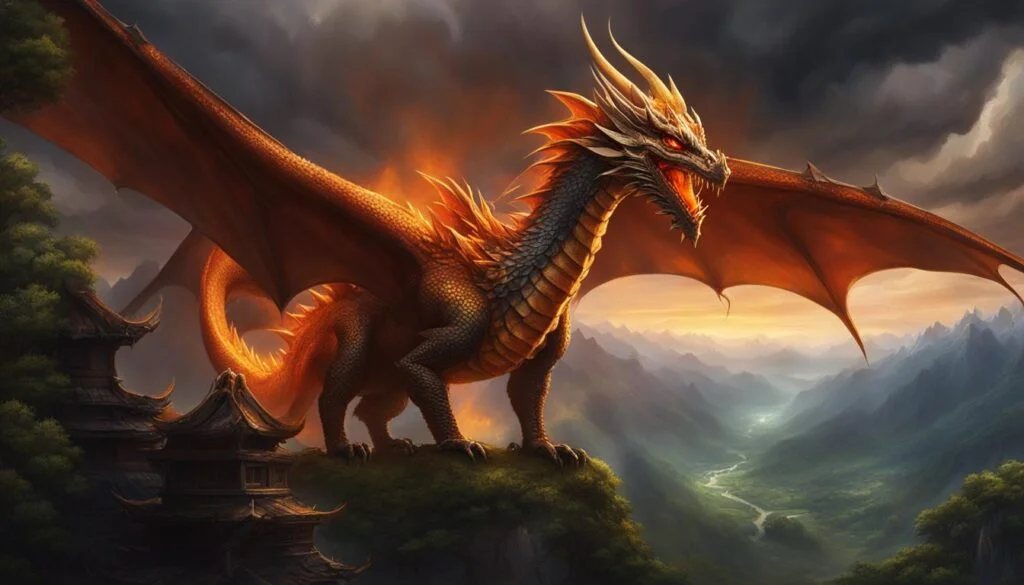Welcome to our exploration of the afterlife in Norse mythology! In this article, we will delve into the realm of Hel, the underworld of Norse cosmology. We’ll examine the concept of Hel, its relationship to the Christian concept of Hell, and its significance in the Norse belief system. So, join us as we unravel the mysteries of the afterlife in Norse mythology!
Key Takeaways:
- Hel is the name of the Norse underworld, presided over by a goddess named Hel.
- Hel is not the same as the Christian concept of Hell.
- The afterlife in Norse mythology is a continuation of life, where the dead engage in activities similar to those of the living.
- Hel is one of the realms in Norse cosmology, connected by the World Tree, Yggdrasil.
- Helheim, the realm ruled by Hel, is a reflection of mortal life.
The Concept of Hel in Norse Mythology
In Norse mythology, Hel is the name given to the underworld realm where the dead reside. It is believed to be located underground, with some sources suggesting it is situated in the cold and dark north. Hel is often depicted as a neutral or even positive place, as it serves as a continuation of life in a different realm. The afterlife in Norse mythology is not determined by moral behavior or religious beliefs, but rather by the state of being deceased. While the Prose Edda, written by Snorri Sturluson, presents a more negative and Christian-influenced portrayal of Hel, it is not widely accepted as an accurate representation of Viking Age beliefs. Other sources describe Hel in more neutral or even positive terms.
The Guardians and Entrance to Hel
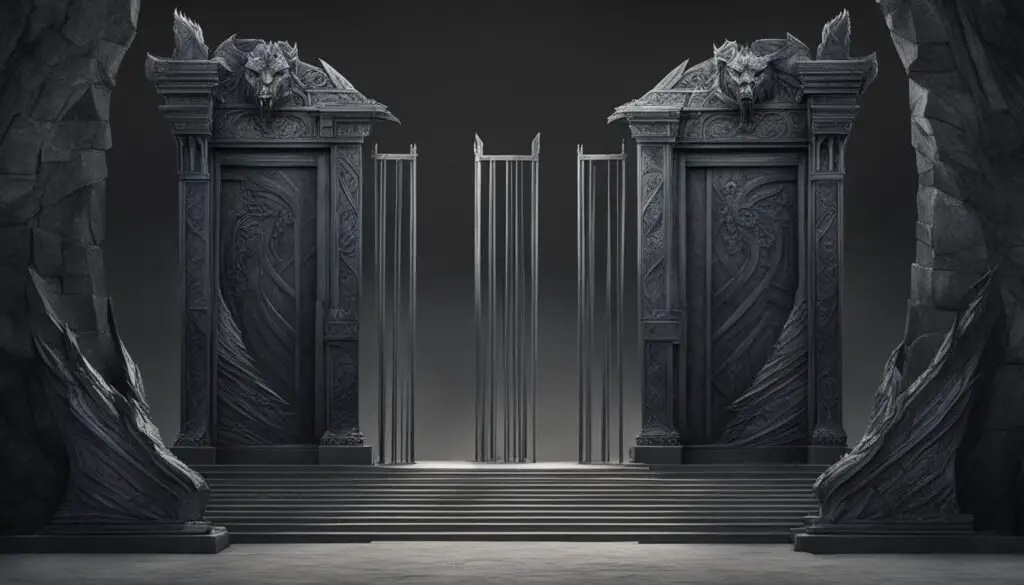
In Norse mythology, the realm of Hel is said to be guarded by a dog at its entrance, much like the three-headed guardian Cerberus in Greek mythology. This dog is often described as a fierce and formidable guardian, preventing unauthorized access to Hel. While the exact location and nature of the entrance remain unclear in the sources, there are mentions of certain elements that are commonly associated with the journey to Hel.
One prominent feature of the journey to Hel is the crossing of a bridge over a river called Gjoll. This river is sometimes described as flowing with weapons, adding an air of danger and mystery to the passage. The journey across this bridge serves as a symbolic threshold, separating the realm of the living from the realm of the dead. It is a significant step in the process of transitioning from one realm to another.
Additionally, there are mentions of a gate and a wall in connection to Hel, although the sources do not provide much detail about these features. These elements further emphasize the notion that access to Hel is guarded and protected, and that reaching this realm requires overcoming various obstacles along the way.
The guardians and entrance to Hel add to the rich tapestry of Norse mythology, providing a sense of mystery and allure to the realm of the dead. The symbolism associated with the journey, from the fierce guardian dog to the crossing of the bridge and the mention of the gate and wall, paints a vivid picture of the trials one must face in order to reach Hel. It reminds us that the afterlife in Norse mythology is not easily accessible, but rather a realm that demands courage, determination, and a willingness to venture into the unknown.
The Road to Hel in Norse Mythology

In Norse mythology, the journey to Hel is not a mere transition from life to death but a profound and mystical experience. Known as Helvegr, meaning “The Road/Way to Hel,” this path is shrouded in mystery and leads adventurers through a series of challenges and trials.
The journey typically begins with descending from a higher point, often symbolized by the trunk of Yggdrasil, the majestic world tree. As travelers venture forth, they traverse dark valleys and mist-covered regions, symbolizing the transition from the realm of the living to the realm of the dead.
One crucial element of this perilous journey is the crossing of the river Gjöll. The river is often depicted as daunting, flowing with powerful currents and dangers. The crossing serves as a test of courage and determination for those seeking Hel’s realm.
Another significant feature on the road to Hel is the encounter with a gatekeeper or guardian. These figures stand as formidable protectors, ensuring that only the worthy may enter Hel’s domain. Overcoming their challenges and proving oneself worthy to proceed is a crucial step in the journey.
As adventurers progress along Helvegr, they face various obstacles that may differ in different accounts. However, the common thread is the need to overcome these challenges through resourcefulness, bravery, and determination.
The journey to Hel represents a profound shamanic experience, resembling similar traditions found in circumpolar cultures. It is a spiritual odyssey that tests the individual’s character and ultimately leads them to Hel, where they can reunite with the departed and connect with the realm of the dead.
Helheim as a Realm in Norse Cosmology
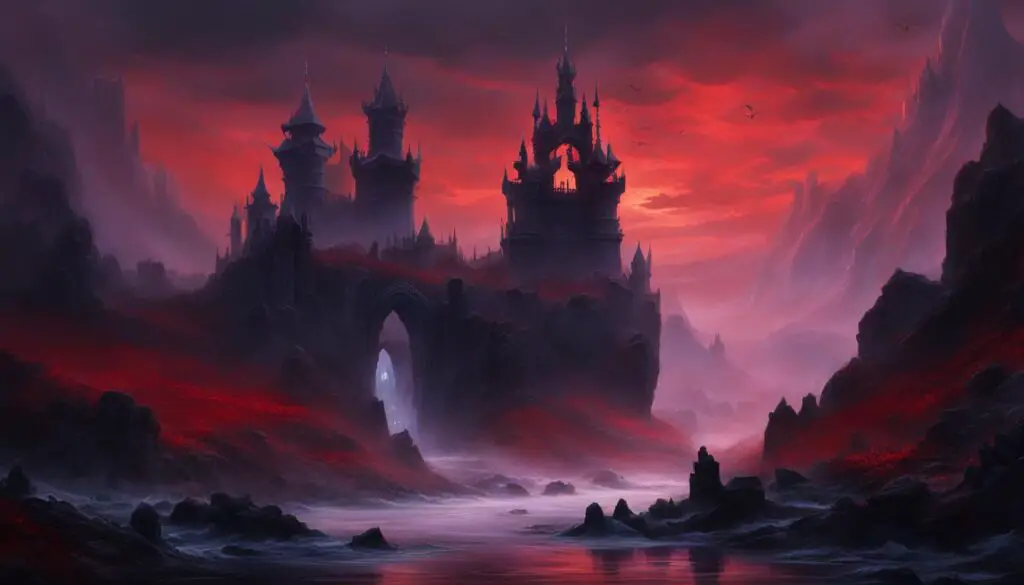
Helheim is an intriguing aspect of Norse cosmology, situated among the nine worlds interconnected by the magnificent Yggdrasil, the World Tree. Nestled in the depths of Yggdrasil’s roots, specifically in the downward and northern direction, Helheim holds its place as a distinct realm in Norse mythology.
As a realm of the dead, Helheim welcomes those warriors who do not find themselves in the legendary Valhalla, the afterlife reserved for the brave and honorable. In this tranquil yet mysterious realm, souls destined for eternity experience their afterlife, separate from other realms in Norse cosmology.
The knowledge surrounding the specifics of Helheim is limited; however, its significance as a key component of the Norse mythological realm remains undisputed. Located within the roots of Yggdrasil and serving as the abode for those not granted access to Valhalla, Helheim is an essential part of the Norse cosmological structure.
The Ruling Being of Helheim – Hel
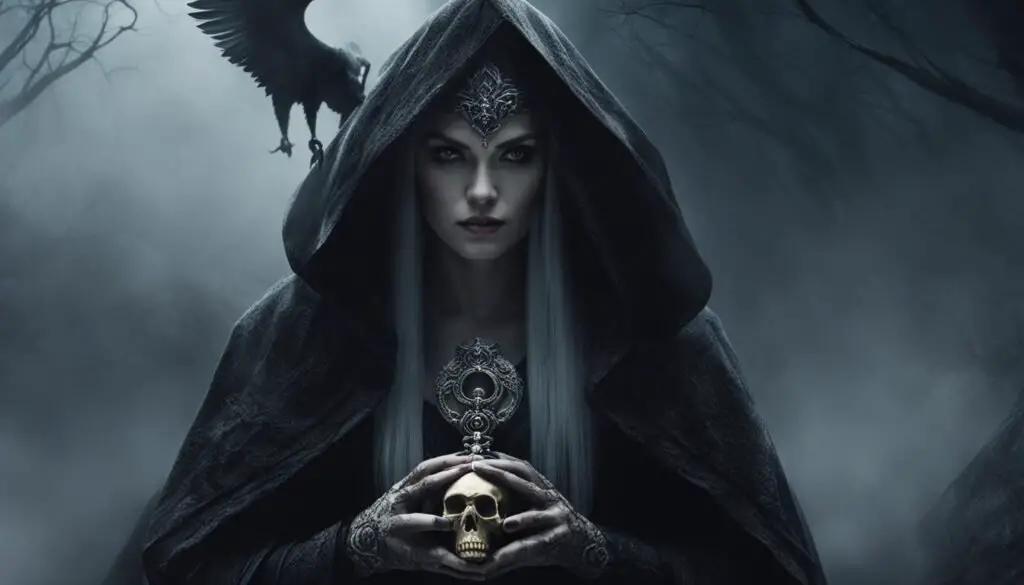
Hel, the goddess after whom Helheim is named, is the ruler of this realm in Norse mythology. She is the daughter of Loki and the giantess Angrboda, making her a half-sister to the great wolf Fenrir and the serpent Jormungandr. The Aesir gods feared the offspring of Loki’s union with Angrboda and decided to place each child somewhere in the cosmos where they could do the least harm. Hel was sent to Niflheim, another realm associated with the dead. She is often described as having a half-black, half-flesh-colored appearance, representing her connection to both the living and the dead.
Helheim and Other Realms of the Norse Afterlife
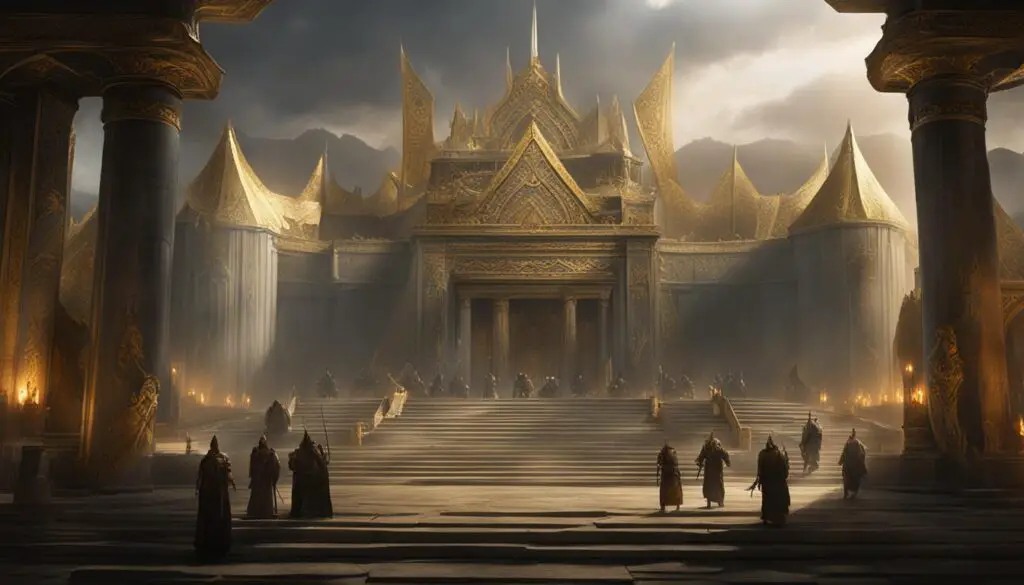
In Norse mythology, the afterlife consists of various realms, each associated with different groups of individuals. While Helheim is one of these realms, it is important to note that it is not the only destination for the deceased.
Valhalla and Folkvangr: The Afterlife Realms for Brave Warriors
The fallen warriors who die in battle are believed to find themselves in either Valhalla or Folkvangr. Valhalla, the renowned hall of Odin, is a place where brave warriors are taken to feast and fight alongside the gods. Folkvangr, on the other hand, is a realm ruled by the goddess Freyja, who selects half of the slain warriors to join her in her hall.
Image:
Ran: The Afterlife Realm for Those Who Drown at Sea
Ran is the realm designated for those who meet a watery demise. In Norse mythology, those who perish at sea find themselves in the care of Ran, a sea goddess known for capturing drowned sailors and offering them a place in her underwater realm.
Helgafjell: A Holy Mountain for the Afterlife
Helgafjell is mentioned as a sacred mountain where some of the deceased may spend their afterlife. Though not extensively described in the sources, this realm represents another possibility for where individuals may find themselves after death.
It is important to mention that there is not always a clear distinction between these realms in older accounts, and they are often not explicitly named. The afterlife in Norse mythology is a multifaceted belief system, where individuals’ destinations may vary based on various factors such as their cause of death, bravery in battle, or other considerations.
Helheim – A Place of the Dead
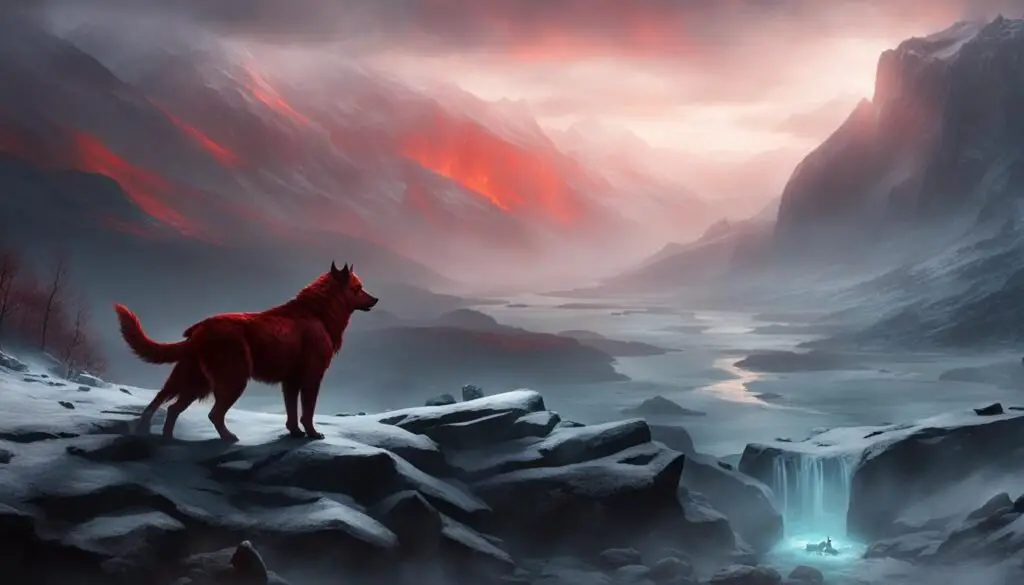
While there is limited information about the specific characteristics of Helheim, it is believed to be a place where the dead continue to exist in a manner similar to their mortal lives. It is described as a reflection of the mortal world, where the dead engage in activities similar to those they did when alive. Valhalla is also portrayed as a place where warriors can continue their warrior lifestyle.
Unlike the Christian concept of Hell, Helheim is not solely an afterlife for the wicked or a place of punishment. Instead, it is a realm where the dead can find solace and familiarity. It serves as a continuation of mortal life, allowing individuals to carry on with their daily routines and pursuits.
Within Helheim, there is a specific area known as Nastrond, where the wicked may reside. It is said to be a place of torment, where the dragon Nidhoggr inflicts suffering upon the souls that dwell there.
Overall, Helheim offers a unique perspective on the afterlife in Norse mythology. It provides a glimpse into a realm where the dead can find comfort and engage in activities that mirror their mortal existence.
Key Points:
- Helheim is a reflection of the mortal world, where the dead continue their existence similar to their mortal lives.
- Valhalla, another realm of the afterlife, allows warriors to continue their warrior lifestyle.
- Helheim is not solely a place of punishment like the Christian concept of Hell.
- Nastrond is a specific area in Helheim where the wicked may reside and be tormented by the dragon Nidhoggr.
Conclusion
In Norse mythology, the afterlife is a rich and multifaceted concept that encompasses various realms, including Helheim. Hel, the goddess who rules over Helheim, holds a unique position in Norse mythology as she bridges the gap between the living and the dead. Though the exact nature of Helheim remains enigmatic, it is believed to reflect aspects of mortal life, where the deceased continue to exist in some form.
It is important to note that Helheim is not synonymous with the Christian concept of Hell. In Norse mythology, the afterlife is not solely determined by moral behavior or religious beliefs. Instead, it is a complex belief system that reflects the values and beliefs of the Viking culture. While some sources present Helheim in a more negative light, others depict it as a neutral or even positive realm.
Overall, Norse mythology’s afterlife, including Hel and Helheim, offers a captivating glimpse into the ancient Norse worldview. It underscores the dynamic relationship between life and death, highlighting the interconnectedness of the realms and the ongoing existence of the deceased. As we delve into the depths of Norse mythology, the mysteries of Helheim continue to captivate and inspire us, showcasing the rich tapestry of Norse beliefs and cosmology.
FAQ
Does Norse mythology have a concept of Hell?
Yes, Norse mythology has a realm known as Hel, which is often referred to as the Norse underworld.
What is Hel in Norse mythology?
Hel is the name of the Norse underworld and is presided over by the goddess Hel.
Is Hel the same as the Christian concept of Hell?
No, Hel in Norse mythology is not the same as the Christian concept of Hell. It is not a realm of eternal suffering ruled by Satan.
How is Hel described in Norse mythology?
Hel is described as an underworld realm where the dead dwell, engaging in activities similar to those of the living.
Are there guardians and an entrance to Hel?
Yes, Hel is said to be guarded by a dog at its entrance, and the journey to Hel involves crossing a bridge over the river Gjoll.
What is the road to Hel in Norse mythology?
The road to Hel is called Helvegr and is described as a shamanic journey involving descending from a higher point, crossing a bridge, and encountering obstacles.
Is Helheim a realm in Norse cosmology?
Yes, Helheim is one of the nine worlds in Norse cosmology, believed to be located in the roots of Yggdrasil, the World Tree.
Who is the ruler of Helheim?
The ruler of Helheim is a goddess named Hel, who is the daughter of Loki and the giantess Angrboda.
What are other realms associated with the afterlife in Norse mythology?
Valhalla, Folkvangr, Ran, and Helgafjell are mentioned as other realms associated with the afterlife in Norse mythology.
What is Helheim like as a realm of the dead?
Helheim is believed to be a reflection of mortal life, where the dead continue to exist and engage in activities similar to their mortal lives. It is not solely a realm of punishment.
What is the afterlife in Norse mythology like?
The afterlife in Norse mythology is a complex and varied concept, with different realms offering different experiences for the dead, depending on various factors.


